The Local Defence Forces: Regime Auxiliary Forces in Aleppo
Posted by Aymenn Al-Tamimi on Monday, May 23rd, 2016
By Aymenn Jawad Al-Tamimi

Emblem of the Local Defence Forces. On top: “Homeland, Honour, Sincerity.” Below: “Syrian Arabic Republic. The army and armed forces- Local Defence Forces.”
Besides the well-known National Defence Forces (NDF) that were set up in 2012 with oversight from Iran to act as a counter-insurgency force and auxiliary militia network for the Syrian army, there exists a similarly named but distinct set of militias specific to the Aleppo area known as the Local Defence Forces (Quwat al-Difa’ al-Mahalli- LDF). In brief, the LDF consists of a variety of local militias such as Katibat al-Nayrab al-Maham al-Khasa (The Nayrab Battalion- Special Operations), Liwa al-Baqir (The Baqir Brigade), Fawj al-Safira (The Safira Regiment) and Fawj Nubl wa al-Zahara’ (The Nubl and Zahara’ Regiment). These names mostly refer to areas and towns in the vicinity of Aleppo city, but Liwa al-Baqir is named after the fifth Shi’i imam Muhammad al-Baqir.
A representative for Katibat al-Nayrab affirmed to me that the LDF totals 50,000 fighters (an obvious exaggeration), set up in 2012 by Iran as an auxiliary force for the Syrian army in the Aleppo area. Unsurprisingly, the LDF is linked with Hezbollah as well, though it is Liwa al-Baqir that advertises this connection more than the other LDF formations: something reinforced by the fact that the Lebanese singer Ali Barakat, most well known for his songs for Hezbollah, put out a song dedicated to Liwa al-Baqir. Liwa al-Baqir also appears to be tied in particular to the al-Bekara clan in Aleppo that has gained notoriety for its support for the regime, especially as it is predominantly Sunni (the evidence may suggest a degree of Shi’ification as well in relation to Liwa al-Baqir).

“Liwa al-Imam al-Baqir: al-Bekara clan.” Note the portrait of Hezbollah leader Hassan Nasrallah on the left and Bashar al-Assad on the right. Also note one of the portraits featuring the Hezbollah and Syrian flags.

“The mujahideen of Liwa al-Baqir from the base of operations: God protect you, our mujahideen”- note the Hezbollah armpatch.

Social media graphic for Liwa al-Baqir, featuring the familiar moniker of “The Islamic Resistance” (al-muqawama al-islamiya).

Liwa al-Baqir posters. Note the central one: “Men of the Resistance.” Includes Iranian Supreme Leader Ayatollah Khamene’i, Assad and Nasrallah.
Describing itself as “the first auxiliary [/reserve]” for the Syrian army, Liwa al-Baqir seems to be the most prominent LDF formation. For example, most recently the militia’s social media have advertised heavy involvement in fighting against the Islamic State (IS) focused around the village of Kafr Saghir and fighting against Jabhat al-Nusra and other rebel forces in south Aleppo countryside. Thus, on 20 March 2016, Liwa al-Baqir claimed at least 15 ‘martyrs’ (fallen fighters) in fighting on the Kafr Saghir front to the north-east of Aleppo city, followed by a claim of 5 more ‘martyrs’ two days later. In April, Liwa al-Baqir media mention coordination with Hezbollah in fighting in the south Aleppo countryside, focusing initially on the village of al-Eis. These south Aleppo operations have been advertised as being in coordination not only with Hezbollah (e.g. see here) but also the Iraqi Shi’i militia Harakat al-Nujaba’. The accounts of these operations include this short story:
“We, the men of Liwa al-Baqir, were in the company of the men of Hezbollah when they arrested dozens of the pigs of Nusra whom we wanted to kill but then one of the mujahideen reminded us saying: ‘Oh youth, remember the words of Imam Ali- peace be upon him- who says: ‘And don’t kill those who surrender but rather grant them food and grant them protection.”
Prior to these engagements, Liwa al-Baqir claimed participation in the operations leading to the breaking of the rebel sieges of the Shi’i villages of Nubl and Zahara’ to the north of Aleppo city, as well as operations in south Aleppo countryside as part of the series of Russia-Iran backed offensives that began in October of last year to allow the regime to regain the initiative against the rebels.
Unlike a number of pro-Assad militias whose total numbers of ‘martyrs’ since inception normally do not amount to more than a few or several dozen, Liwa al-Baqir claimed 246 ‘martyrs’ as of 21 March 2016. This claim to a large number of ‘martyrs’ is corroborated to a certain extent by the displays of posters of these ‘martyrs’, samples of which appear below.

Dedicated to ‘martyr’ Muhammad Hussein Raslan, Top-right inscription: “Liwa al-Imam al-Baqir: Local Defence Forces.” Note the faint Hezbollah imagery in the background.

Some more ‘martyrs’ of Liwa al-Baqir, though here the term used is ‘Fawj al-Imam Baqir’ (no real difference in meaning).

Large Liwa al-Baqir mural, likely dedicated to ‘martyrs’ in the militia or linked to it.
Just as the Syrian Social Nationalist Party has used its militia presence in Syria to push for political influence in the form of candidates for the recent Syrian parliamentary elections, so too did Liwa al-Baqir throw its weight behind an ostensibly independent candidate called Omar Hussein al-Hassan.

“Vote for the independent candidate for membership of the People’s Council. Aleppo countryside (group A). Omar Hussein al-Hassan. Offering from: al-Bekara clan, Liwa al-Baqir. The homeland will remain on high by our steadfastness.”
The candidate in question is notable for having the same surname as the leader of Liwa al-Baqir: Khalid al-Hassan, who also goes by the name of Baqir. Khalid is linked to the Syrian state apparatus through the State Ministry for the Affairs of National Reconciliation, as per a post below from January 2016:
“Syrian Arab Republic
State Ministry for the Affairs of National Reconciliation
Document no. 845
The leader of Liwa al-Baqir Khalid al-Hassan (Baqir)…and the distinguished members- members of the Committee of Reconciliation, National Accord and Social Coordination- are operating in the framework of the project of national reconciliation in Aleppo province. We request aid within the systems and laws and in cooperation with Mr. Governor of Aleppo in making their mission succeed. To connect with us in the Liwa al-Baqir centre in Tarkan [a village in the Safira district].”
In this context, it should be noted that Liwa al-Baqir was also involved in a prominent conciliation event at the end of 2015 involving two major families- Abu Ra’s and Berri (the latter also notorious for its support for the regime)- including an event involving military and security officials as well as ‘ulama’ in Aleppo.

Khalid al-Hassan
Interestingly, in March 2016 Liwa al-Baqir claimed the ‘martyrdom’ of Khalid’s brother. No specific details were offered as to the circumstances surrounding his death, though one page for Liwa al-Baqir seemed to present it as a ‘martyrdom’ jointly claimed with Hezbollah. According to the Katibat al-Nayrab representative, he was actually assassinated in Lebanon.
The other LDF formations are less remarkable. For example, Fawj al-Safira, as its name suggests, operates in the Safira area of Aleppo, also renowned as a bastion of regime support. Fawj al-Safira, in repelling IS attacks in the Safira area, has notably coordinated not only with the Syrian army but also the local Safira branch of the Muqawama Suriya, a militia primarily based in Latakia whose founder Ali Kayali has been declared by the Muqawama Suriya to have been ‘disappeared’ (mughayyab) in a possible cover-up of his death since his suspected killing in late March 2016.

LDF forces have had a role in fighting to the south of Aleppo city as IS has repeatedly harassed regime control of the supply line to Aleppo city via Khanaser. Among items captured by IS in an assault in mid-April were LDF ID cards as shown in this photo.
Instead of giving a chronological list of engagements by the LDF, it remains to note that on a wider level the LDF has a ‘political direction’ division that puts out newsletters, featuring political and military developments as well as excerpts from media outlets and political analysis. For example, issue no. 81 that was recently put out opens with commemorations for the deceased Hezbollah commander Mustafa Badreddine (aka Dhu al-Fiqar), who was central to organizing Hezbollah’s efforts in Syria. The political analysis section also gives a summary of Badreddine’s life and accomplishments.
In comparison with many other pro-Assad militias, the LDF clearly amounts to much more than a seemingly ‘exotic’ name and brand. On the contrary, the LDF has been important for organizing local pro-Assad support networks in Aleppo that transcend the sectarian divide to a degree. In part these networks explain the regime’s staying power in Aleppo, rather than just foreign manpower influx in the form of Iranian personnel and Shi’i militias. At the same time, one should not forget the importance of Iran and Hezbollah in the organization and advising of local militia support networks- an analysis that clearly applies to the LDF.
—————–
Appendix update (24 May 2016): An account of the origins of Liwa al-Baqir is offered by the pro-opposition site alSouria.net in an article from January 2016. According to this account, Liwa al-Baqir was set up as a distinct brand and formation by the LDF in 2015, initially working under Harakat al-Nujaba’, which was responsible for the Shi’ification and arming of its fighters. This same report affirms that Liwa al-Baqir now operates separately from Harakat al-Nujaba’.
The LDF more generally, though having roots in and ties to predominantly Sunni ‘shabiha’ clan networks, is portrayed in this article as having come under the increasing influence of the foreign Shi’i militias that have come to the Aleppo area. There is likely something to this, for as I noted in the main article, the evidence from Liwa al-Baqir seems to suggest at least some Shi’ification among al-Bekara clan members. In any case the LDF was set up in the first place by Iran, so it is hardly surprising if Shi’i militias tied to Iran (which have made a prominent mark in Aleppo since 2013) have sought to influence the LDF even further in orientation.
The bulk of the article from alSouria.net is translated by me below:
“Aleppo has seen since the beginning of the protests in it formations affiliated with the LDF formation led by the Berri family a great part of which is known for its support for the regime and its participation in repressing demonstrations, but the feared status and importance of this formation has retreated with the beginning of the arrival of foreign militias to the regime’s areas in Aleppo, and the Shi’a militias have managed to include the LDF through Shi’ification of its fighters.
The alSourianet correspondent in Aleppo, Muhammad al-Shafi’i, points out that the LDF formed Liwa al-Baqir last year, with its base in the village of Tarkan in south Aleppo countryside, clarifying that the brigade worked within the militia formation of the Iraqi Harakat al-Nujaba’, which uses the al-Assad academy as a base for its military operations.
And special sources mention to alSouria.net that Liwa al-Baqir currently works separately and independently from Harakat al-Nujaba’ to regain authority over Aleppo, and has portrayed itself as an auxiliary for the forces of Bashar al-Assad’s regime. According to the same sources the brigade’s numbers are around 2000 fighters, who have obtained their weapons previously from Harakat al-Nujaba’, in addition to their receiving salaries of 25,000 Syrian pounds [per month].
The Iraqi militia supervised the formation of this brigade after the Shi’ification of its members and the establishment of special camps for them. They were trained in assault methods and were deployed in the recent south Aleppo battles, and Liwa al-Baqir is led by “Khalid al-Hassan al-Aloush al-Baqir” and with protection from people in the Berri family. And the sources mention to alSouria.net that the number of those from the brigade killed in the recent battles of south Aleppo countryside reached 50 members, all of whom are from the ‘Shabiha,’ while the number of those killed from the brigade since its formation until the beginning of this year reaches up to 300 killed.
The brigade participates in frontline duty operations in the villages of south Aleppo countryside controlled by the regime and its militias since two months ago, in addition to the presence of military checkpoints of the brigade inside Aleppo. In addition Liwa al-Baqir has special training camps in the villages of Tel Shaghib, Issan, Ain Issan and Tarkan in south Aleppo countryside.”













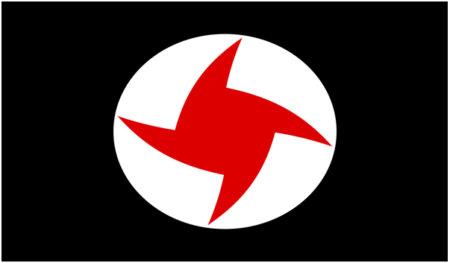


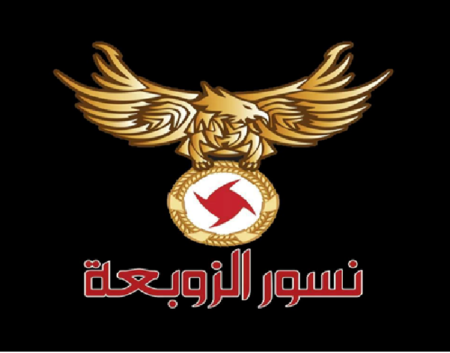


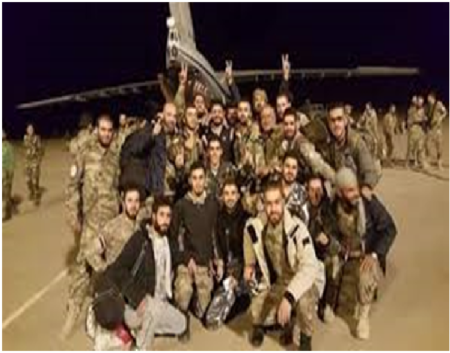







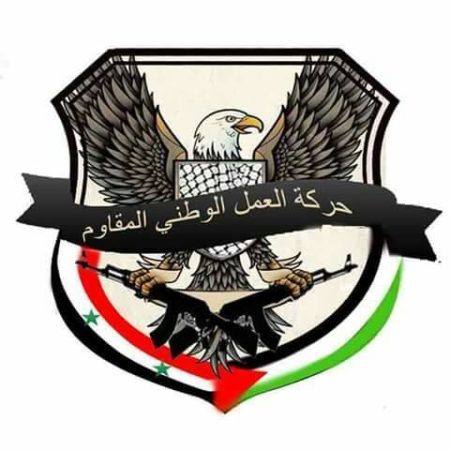






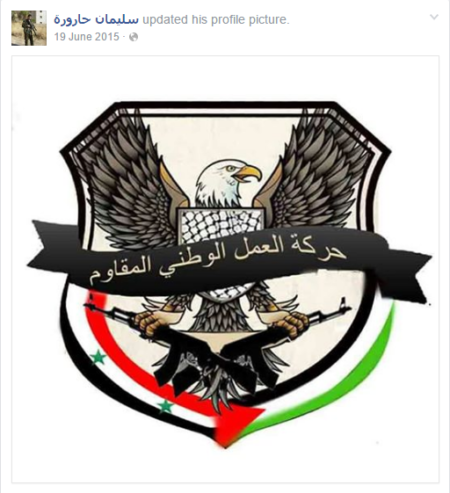
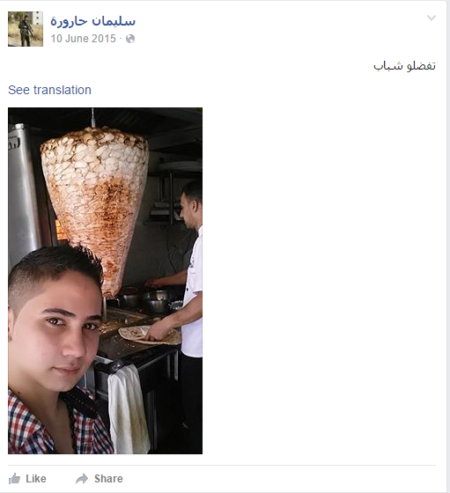
 Remembering Dr. Hassan al-Araj
Remembering Dr. Hassan al-Araj I am writing to you today as Dr. Hassan was killed two weeks ago in Hama province by a Russian airstrike as he traveled between two hospitals, the “cave” and Kafr Zeta. The cave hospital has literally been carved into a mountain in an attempt to protect it from Assad regime and Russian airstrikes. I am not sure whether you have written about the relentless airstrikes destroying health facilities in Syria, killing medical staff and civilians but it is an on-going tragedy and disaster with no apparent end in sight. Dr. Hassan was the last cardiologist in Hama province. In addition to performing lifesaving surgeries, speaking out against the targeting and destruction of hospitals in Syria, he was also the head of the Hama Health Directorate and worked closely with Syrian American Medical Association (SAMS).
I am writing to you today as Dr. Hassan was killed two weeks ago in Hama province by a Russian airstrike as he traveled between two hospitals, the “cave” and Kafr Zeta. The cave hospital has literally been carved into a mountain in an attempt to protect it from Assad regime and Russian airstrikes. I am not sure whether you have written about the relentless airstrikes destroying health facilities in Syria, killing medical staff and civilians but it is an on-going tragedy and disaster with no apparent end in sight. Dr. Hassan was the last cardiologist in Hama province. In addition to performing lifesaving surgeries, speaking out against the targeting and destruction of hospitals in Syria, he was also the head of the Hama Health Directorate and worked closely with Syrian American Medical Association (SAMS). In addition to killing children, they killed the last Pediatrician, Dr Wassim, in opposition held Aleppo. This hospital was supported by several humanitarian organizations and was part of the program that I was responsible for until I left Gaziantep in November 2015. Dr. Wassim now joins Dr. Hassan on the long list of courageous medical workers and other innocent civilians, killed in airstrikes in Syria.
In addition to killing children, they killed the last Pediatrician, Dr Wassim, in opposition held Aleppo. This hospital was supported by several humanitarian organizations and was part of the program that I was responsible for until I left Gaziantep in November 2015. Dr. Wassim now joins Dr. Hassan on the long list of courageous medical workers and other innocent civilians, killed in airstrikes in Syria.
 The Lens of History and Assad
The Lens of History and Assad as his decision—and he did have a choice–in the initial stages of the uprising in Syria in 2011 to revert to the dictator’s survival handbook and sanction a harsh crackdown on the protestors instead of implementing necessary reforms, pushing an uprising into a destructive civil war now five years hence with some 300,000 dead and half the country’s population internally or externally displaced.
as his decision—and he did have a choice–in the initial stages of the uprising in Syria in 2011 to revert to the dictator’s survival handbook and sanction a harsh crackdown on the protestors instead of implementing necessary reforms, pushing an uprising into a destructive civil war now five years hence with some 300,000 dead and half the country’s population internally or externally displaced. President al-Assad’s First Speech – An Insider’s Account
President al-Assad’s First Speech – An Insider’s Account


